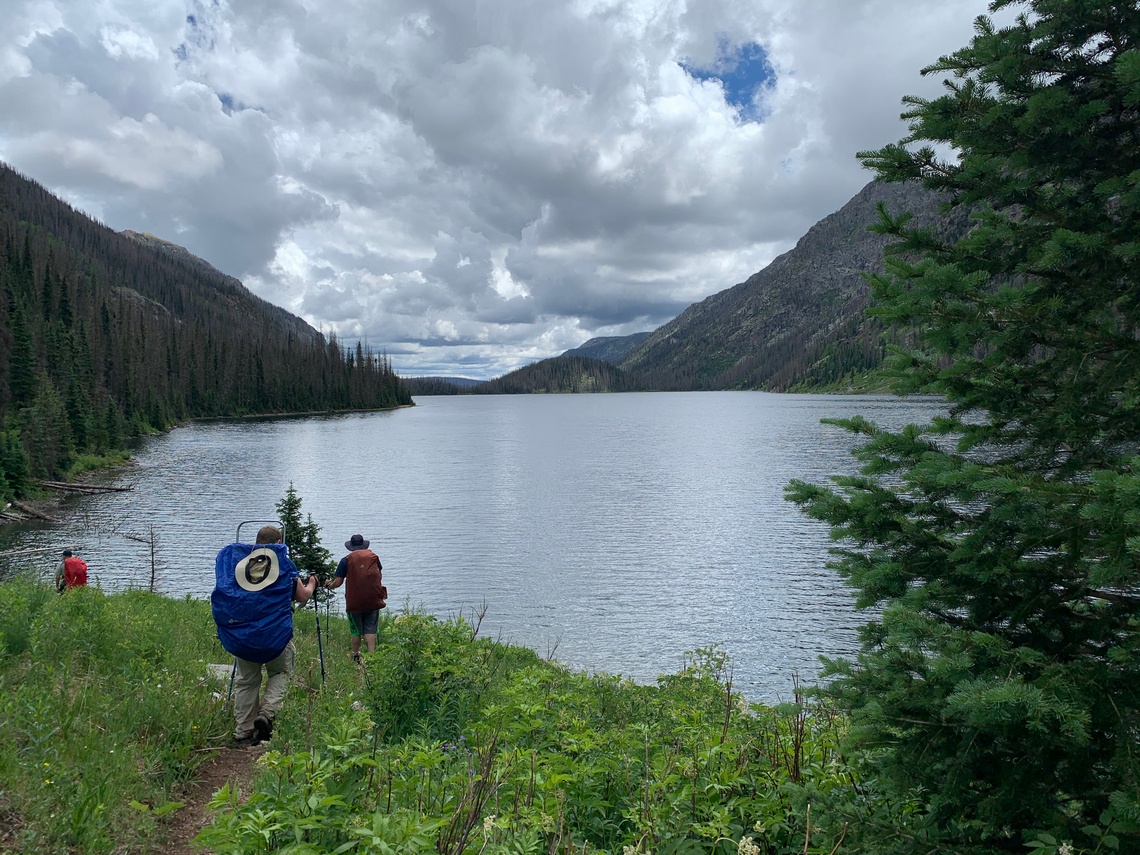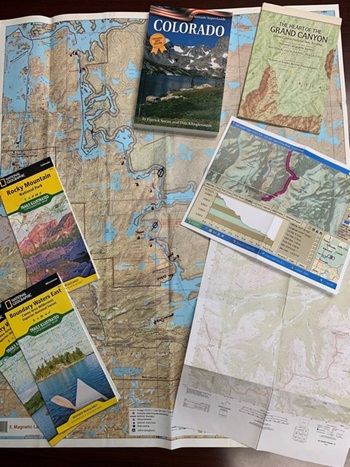Adventure Trips for Older Boys, Part 2

September 29, 2021
Want to do an Adventure Trip at your outpost but don’t know where to begin. The first place to start is with an adventure the boys will want to do. At our outpost, the Adventure Rangers and Expedition Rangers leaders submit three to five different options they think would interest our boys. Each leader researches his idea. Then, we present all the options to the boys with photos, maps, travel time, any additional activities to add along the trip, and possible costs. Next, we give the boys time to think about these options and to suggest ideas of their own with the basic research on travel time and cost. Finally, we have the boys rank the options from first to last. The option with the most votes is the one that we will continue to pursue. We also select a backup option from the list.
You might ask, “When do you start your process of planning?” Our outpost starts planning shortly after the promotion of boys in the late summer for the trip we will take the following summer when the boys are out of school. After the boys have selected the trip they want to do, we continue planning and researching. We start our process in the late summer because our outpost has to submit calendar dates for the upcoming year in the fall. We want to make sure we get this trip submitted to the church for approval. At our church, if the plan includes using a church vehicle or renting a vehicle, then we have to include this in our event request. If your church is the same, don’t forget to it.
Depending on the trip location, some advanced planning may be needed. Some locations require permits or reservations. Some locations due to popularity may require booking six months in advance. Yosemite National Park is a good example where millions of people visit, and millions more are turned away because all overnight visits require a permit or reservation. Getting a permit to backpack in Yosemite when thousands of others are requesting those same dates is nearly impossible because they only allow a certain number of people on the trails at any given time. If your group isn’t able to get the permit or reservation for its first option, then the group will need to change to a backup option.
Other things can arise that will affect the plan. Over the years avalanches, fires, and even storms have required adjusting our plans. Be flexible and make sure to check periodically for changes that may affect your plans. Checking in with a local guide business, ranger station, or campground that can help with your initial plans and with adjustments is always good.
At about four months prior to the activity, our outpost has the boys plan a timeline for the trip. We have them include detailed travel plans, the additional activities, lodging or campsites, and the main activity. This may need maps and online calculators to pull together a good plan. Some additional activities the boys might like to include are white water rafting for half a day, serving a local church or mission for a day or two, or going to a theme park.
Although we allow the boys to be very involved in planning the trip and other excursions along the way, as leaders, we counsel them. Don’t let the plan be overzealous. Remember, if you have never done the activity, talk to someone who has. For example, in part 1 of this article about our hiking trip in the Rocky Mountains, we started at an altitude of 7,900’ with a goal of hiking six miles a day. For this trip, there were things we had to counsel the boys on. Altitude sickness can be a severe problem. Due to physical conditioning or current health, some members may experience altitude sickness once arriving in the mountains. We have advised our boys to keep some flexibility in the schedule in case we need to spend a night at the trail head to allow everyone to acclimate to the altitude (climatize) or need to stay an extra night in one of the campsites for some to climatize again. It is better to be safe than plan something and not be able to follow through. If something does come up, there is always next year to complete the plan, but safety must be of utmost concern. Finally, we advised the boys to consider the terrain and the physical conditioning of the participants in selecting how many miles a day to hike. We reminded them that while hiking each person would carry a pack weighing 30-50 pounds.
You may ask, “Why did he spend so much time on altitude sickness?” That’s easy. I want those preparing for any multiday trips to be aware of the adverse conditions that can arise and be prepared to adjust the schedule. As you research your trip, you will also need to research any adverse conditions that could arise. These could be medical conditions, such as altitude sickness, weather related conditions, or natural disasters, such as forest fires.
We have been planning trips for several years. This means we have boys who have been on previous trips leading the new boys in the planning stages. For our leaders, our role is to advise the boys as they plan. If this is your first adventure trip, it will be a learning experience for the leaders and the boys. Then, the following year, the leaders can move into the role of counselor during the planning.
Now that the trip details are planned, it’s time to create a flyer that includes equipment rental cost if necessary. The same information can be used in an email, outpost newsletter, and social media posts. You may have older boys who are skilled at developing flyers or finding the right image to accompany the social media posts. Don’t be afraid to let boys use their giftings and take the lead in advertising and social media posts. I’m not saying the leaders shouldn’t be involved. There should be a leader to advise boys in the advertising of the event.
Part of trip planning during the year is determining the equipment needed. On larger trips, you will need to set a cutoff date so that transportation, food purchasing, and rental of equipment can be scheduled. Let the boys and parents know the equipment the outpost has. If the outpost equipment is limited, it may need to be reserved on a first come basis. Others would then need to rent any needed equipment. Depending on the trip, there may be specific equipment that is needed like bear canisters, stoves, water filters, etc. (Remember, not everyone needs to bring some of these items. You may only need one or two for the entire group.) When the trip details are released, you should put one of the boys in charge of tracking equipment needs. Of course, you will need a leader to give any oversight to this young man. Finally, complete the plan to rent equipment or borrow it from other outposts.
During the planning, the leaders and boys can determine if any merits will need to be scheduled for the year in preparation for the trip. If you are giving the opportunity to earn merits, cover everything needed to earn the merit prior to the trip so that when the trip is completed the boys can be presented with the merit award.
Another part of trip planning is determining what personal gear is needed. If the boys are working on specific merits prior to the trip, the lessons may include sections on equipment and personal gear. Some specific activities have specific gear. The boys would determine if the gear they already have would work for the trip or if they would need to purchase or borrow something specific.
About three weeks before the trip, you will finalize food lists so supplies can be purchased. The type of trip will determine when you need to pack the food supplies. If you are going on a backpacking or canoeing trip, then you will want to pack the food two weeks prior. If you are starting with a ministry or construction trip, then you can wait a few days before the trip to pack because you may be taking more fresh food rather than dried or prepackaged.
One week prior to the trip, all medical forms need to be collected. Make sure a copy goes to the church. The leader in each vehicle needs a copy of the medical forms for the boys in his vehicle. All original forms need to remain with the trip director. You may think that is a lot of duplicate effort. However, if the outpost is traveling in a caravan of several vehicles and one vehicle is in accident and the leader in that vehicle is incapacitated, then the trip director will have a copy of everyone’s medical forms.
Be sure to leave the trip itinerary with the church, parents, and leaders’ spouses. This allows many people to act if the group does not arrive home at the scheduled time. If something arises during the trip that requires a major change to the schedule, then communicate that with everyone. For example, if one of the vehicles breaks down, requiring an unexpected stop, then communicate the delay. It would be bad for multiple parents or spouses to contact the authorities to look for the group due to lack of communication.
The departure day has come. It’s time to load the vehicles. Make sure you follow the guidelines for transporting the boys in the Ranger Safety Training Course.
This article is tailored mainly to backpacking and canoeing trips. Whatever the trip, putting together a good plan and following it is very important. If you, the leader, have never done the chosen activity, you will need some wise counselors who will be part of the planning and who may even go on the trip with you.

Royal Rangers USA
